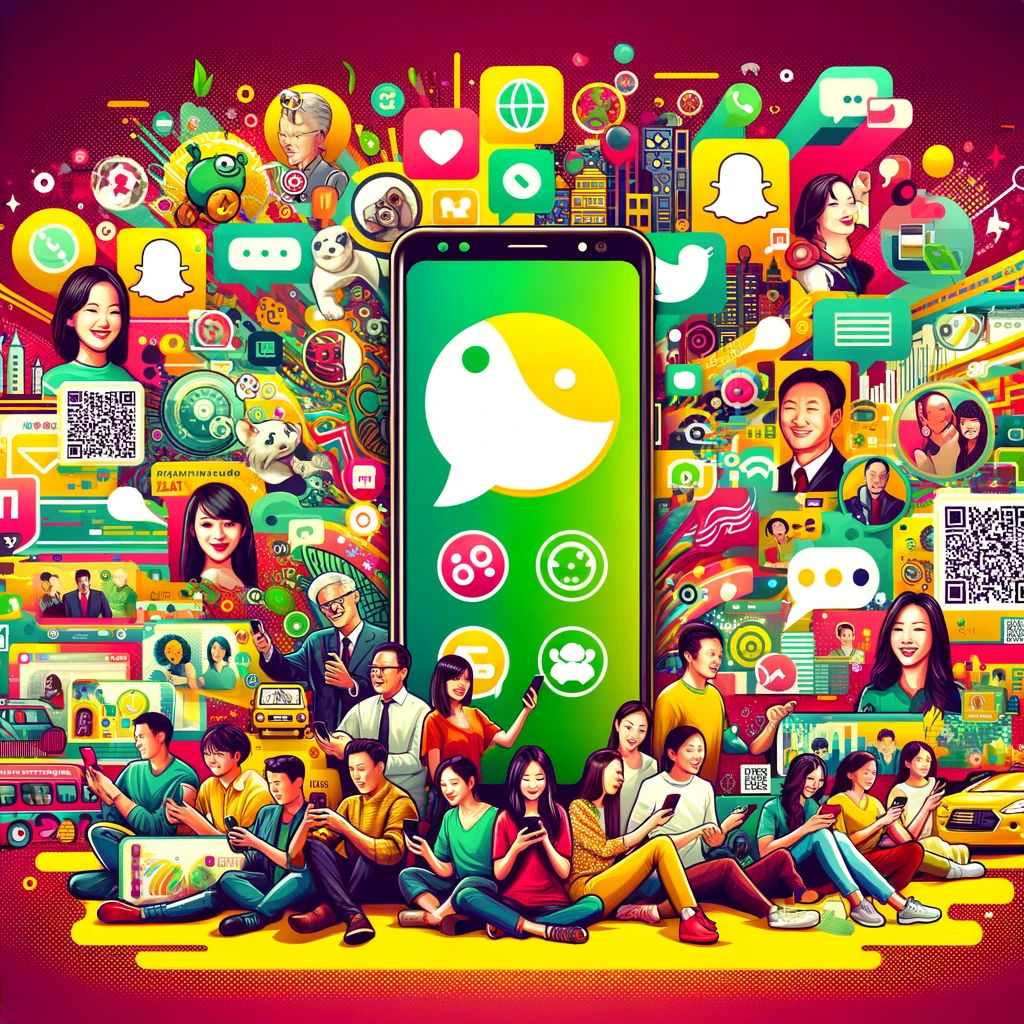
WeChat, developed by the Chinese tech giant Tencent, is much more than just a messaging app. Since its release in 2011, it has evolved into a versatile platform that seamlessly integrates social media, messaging, and financial transactions, fundamentally altering how over a billion people communicate, shop, and interact daily.
At its core, WeChat provides messaging services, including text, voice, and video calls, but its capabilities extend far beyond basic communication. It functions as a comprehensive ecosystem within a single app, where users can perform a multitude of tasks ranging from ordering food and booking taxis to scheduling doctor appointments and making utility payments. This versatility has made it an indispensable part of daily life for many people, particularly in China.
WeChat’s user interface is intuitive, designed to cater to users of all ages. The app’s ability to add friends and contacts can be done through various innovative means like QR codes, which users scan with their phone’s camera, a feature that has popularized the QR code technology across China. The platform also supports a range of creative expression forms through its customizable ‘Moments’ feature, a social feed where users can post images, text, videos, and articles, visible to their contacts based on privacy settings they control.
One of the critical aspects of WeChat’s success is its integration of payment functions through WeChat Pay, a digital wallet service that allows users to conduct transactions smoothly and securely within the app. This feature supports retail payments, peer-to-peer transfers, and bill payments, among other functions, simplifying financial transactions for millions of users and fostering a cashless society.
WeChat’s impact extends into the business realm as well. It offers a platform for businesses to create official accounts to market and sell directly to consumers through both static and dynamic advertisements. These official accounts serve as mini-webpages within the app, providing a potent tool for customer relationship management, sales, and marketing. This business model has not only revolutionized traditional business practices but has also given rise to new marketing strategies.
Furthermore, WeChat is at the forefront of integrating artificial intelligence into its services. Features like automatic translation, facial recognition, and personalized news recommendations enhance user engagement and convenience. This technology integration has made WeChat an innovative leader in the tech world, constantly pushing the boundaries of what a messaging app can do.
Despite its numerous advantages, WeChat also faces challenges and criticisms, particularly concerning privacy and censorship. The app operates under stringent Chinese internet regulations, which means that content and conversations can be subject to state monitoring and censorship. This aspect of WeChat has been a significant concern for international users and has occasionally affected its global reputation.
Internationally, WeChat has been trying to expand its reach beyond China, although it faces stiff competition from other messaging and social media platforms such as WhatsApp, Facebook, and Telegram. However, its complete range of services and integration into the daily lives of its users provide a unique selling point that other apps currently do not offer.
WeChat’s influence also extends to social impacts, shaping how social interactions and communications unfold in the digital age. It has transformed traditional practices, fostering new digital etiquette and influencing personal and professional relationships. The platform has become a critical tool in maintaining relationships, conducting professional communications, and facilitating a digital lifestyle that blends the online with the offline.
The app’s adaptability has been crucial during emergencies, such as during the COVID-19 pandemic. WeChat was pivotal in disseminating information, facilitating remote work, and supporting online education initiatives. Its ability to quickly adapt and provide critical services during such times highlights its role not just as a technology platform but as a societal backbone.
In conclusion, WeChat represents a significant advancement in the convergence of social media, messaging, and financial technology. Its ability to connect over a billion people with a multitude of services beyond just calls and chats places it at the forefront of the digital revolution. As it continues to evolve, WeChat will likely influence not only how we communicate but also how we manage our daily lives in an increasingly interconnected world.
Image titled “WeChat: Revolutionizing Communication with a Billion Users,” illustrating the diverse functionalities of WeChat and its global impact.